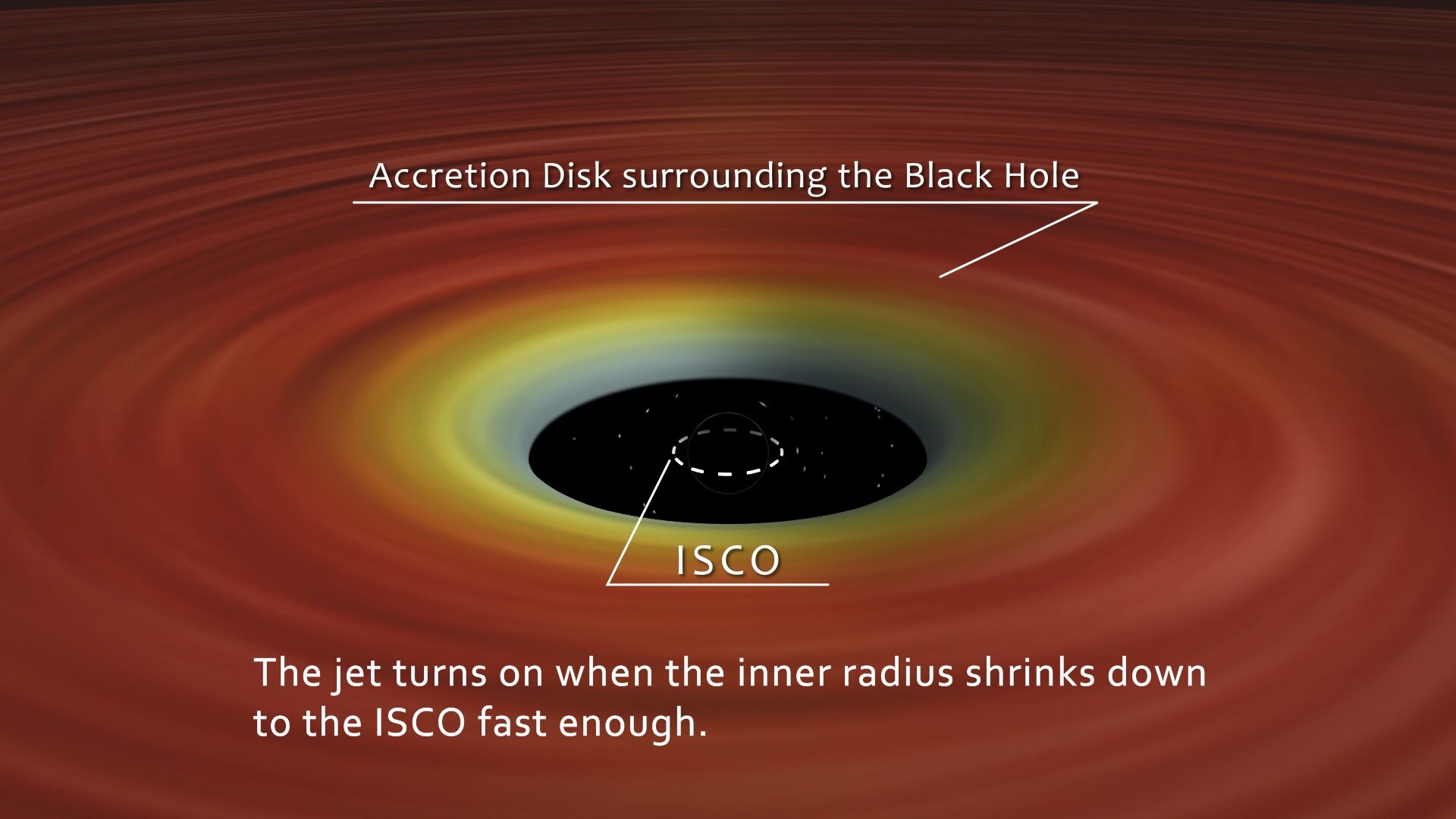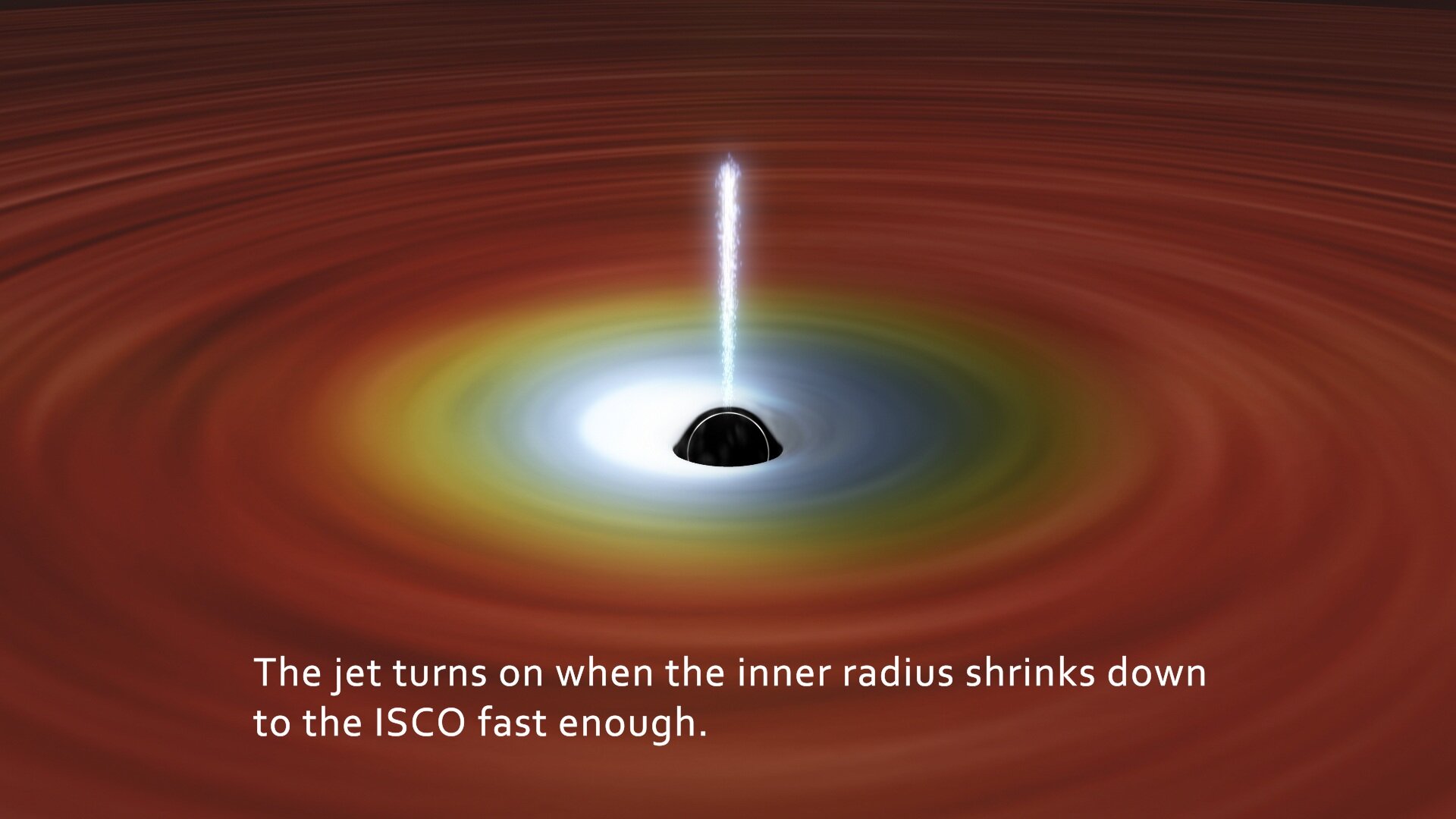Why and how do black holes eject matter jets? ⚫
Published by Adrien,
Source: Publications of the Astronomical Society of Japan
Other Languages: FR, DE, ES, PT
Source: Publications of the Astronomical Society of Japan
Other Languages: FR, DE, ES, PT
Follow us on Google News (click on ☆)
These jets, observed for over a century, remained enigmatic until an international team led by Professor Kazutaka Yamaoka deciphered their formation. Published in Publications of the Astronomical Society of Japan, their work shows that these phenomena occur when the accretion disk around the black hole abruptly contracts.

The inner edge of the gas disk rapidly approaches the innermost stable circular orbit (ISCO) near the stellar black hole, triggering the eruption of a plasma jet. The jet continues until the inner edge stops moving.
Credit: T. Kawaguchi (University of Toyama) & K. Yamaoka (Nagoya University)
The study focused on a binary system comprising a black hole and a Sun-like star. Researchers analyzed X-ray and radio data, revealing that jets appear when the disk's inner radius reaches the ISCO, the innermost stable circular orbit. This discovery contradicts theoretical models assuming static conditions.
Jets influence star formation and distribute energy across the Universe. Understanding them opens new perspectives on galaxy evolution and black hole physics. Researchers now plan to apply these findings to supermassive black holes.

The inner edge of the gas disk rapidly approaches the ISCO near the stellar black hole, triggering the eruption of a plasma jet. The jet stops when the inner edge's movement ceases.
Credit: T. Kawaguchi (University of Toyama) & K. Yamaoka (Nagoya University)
This research highlights the importance of dynamic conditions in jet formation. Observed changes in X-rays, with an increase in soft X-rays, are directly linked to the accretion disk's motion. These observations now enable more accurate predictions of jet occurrences.
Professor Yamaoka emphasizes that these mechanisms could be universal, applying to both stellar and supermassive black holes. However, studying the latter presents additional challenges due to their slower evolution and the difficulty of measuring their internal structures.
What is an accretion disk?
An accretion disk is a structure formed by matter orbiting a massive central object, such as a black hole. This matter, primarily gas and dust, is drawn by the central object's gravity and accumulates into a thin, hot disk.
The accretion disk is the site of extreme physical phenomena, where matter can reach temperatures of several million degrees. This intense heat causes X-ray emissions detectable from Earth.
The disk's dynamics are crucial for understanding how black holes grow and how they eject matter jets. Differential rotation of the disk, where inner parts spin faster than outer ones, generates friction that heats the matter.
Studying accretion disks also helps test Einstein's general relativity theories, particularly in extreme gravity environments near black holes.
Why are plasma jets important?
Plasma jets ejected by black holes are among the most energetic phenomena in the Universe. They can extend for thousands of light-years and influence star formation in galaxies.
These jets transport energy and matter at near-light speeds. They play a key role in redistributing matter and energy across the Universe, thus affecting galaxy evolution.
Jets also serve as markers for locating distant black holes. Their study helps astronomers better understand black hole properties, such as mass and spin.
Plasma jets also provide a unique window into extreme physical processes near black holes, where the laws of physics are pushed to their limits.